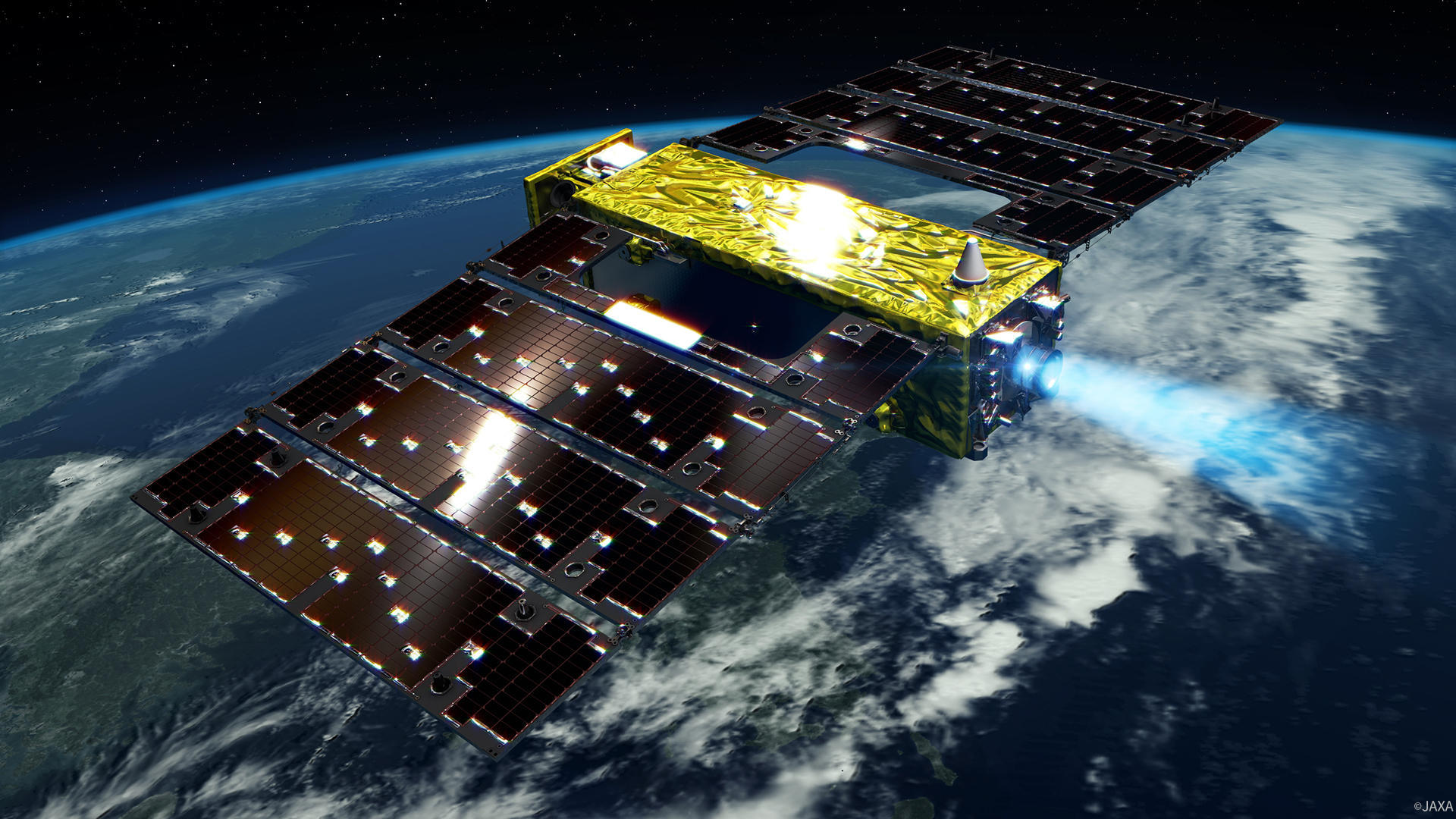
Space Technology Directorate

TSUBAME x Yakult Swallows
Message of Cheer from Outer Space
The mission of this small test satellite is to "fly low"
Most satellites that are observing the Earth fly at an altitude of 600 kilometers to 800 kilometers above ground. When they are at that height, they hardly receive the effects of Earth's atmosphere, and are able to remain in orbit in a stable manner for a long period of time. The Super Low Altitude Test Satellite TSUBAME (SLATS) is about to defy this conventional way of orbiting satellites. This is the first ever Earth observation satellite that uses a super low orbit at an altitude of 300 kilometers or less.
When a satellite flies at a super low orbit that is closer to the ground and in thicker atmosphere, it receives 1,000 times greater atmospheric drag compared to when flying at an altitude of 600 kilometers to 800 kilometers. This is like flying with the brakes applied, causing the satellite to eventually fall to the ground. To maintain the satellite at a low altitude over a long period of time, it needs to be continuously propelled by a gas jet, which in turn requires that the satellite be loaded with a massive amount of fuel. This would make the satellite larger and heavier, resulting in higher costs and making it unable to be launched with a rocket. In order to solve these problems, we adopted an ion engine for TSUBAME, which is 10 times more fuel-efficient than gas jets. Moreover, the body of the satellite was made to be compact and lightweight, with a shape designed to minimize air resistance. These efforts resulted in realizing a satellite that is able to fly at super low altitudes over a long period of time.
Creating a message by connecting images of letters captured at a baseball field

TSUBAME is loaded with an optical sensor (camera) that is able to take photographs at high resolution. The Earth, captured in black-and-white clearly, is depicted like an artwork. Kazuya Konoue who participated in its development says that the amazing thing about this optical sensor is its size.
"If a conventional satellite tries to take a high-resolution photograph of the same quality as that of TSUBAME, the optical sensor would need to be at least 60 cm in diameter. However, since TSUBAME flies at a low altitude, this means that the surface of the Earth, of which the photographs are taken, are at a much closer distance, so the diameter needed would be about 20 cm. The compact size of the optical sensor contributes greatly toward making it possible to create a satellite that is smaller and lighter in weight overall. We are also taking on many other new challenges with this test satellite, such as achieving technologies that would enable taking high-quality images even in the darker times of the day as compared to conventional satellites, and utilizing consumer products to cut down on development costs."
A collaborative event was held from the end of April to early May in 2019 with a professional Japanese baseball team with the same name as the satellite, Tokyo Yakult Swallows ["tsubame" means "swallow" in Japanese]. This event, which made use of TSUBAME's optical sensor, was themed to "Give cheer to the Swallows from outer space: let's have a photo taken by the satellite TSUBAME!"
In this event, which was held during a period when the satellite was undergoing a test of maintaining the same altitude and photographing the same location at nearly the same time every day for about a month, different letters were displayed on different days at Jingu Stadium to be photographed by the satellite, and these images were later connected to form a message that gives cheer to the Swallows. This event ended successfully, despite the interference of springtime fog. The beautiful images impressed many people with the potentials of the TSUBAME satellite.
During this one-month period, TSUBAME maintained an altitude of 271 kilometers. And from now on, the satellite will gradually fly lower, and for its final week in orbit, it will maintain an altitude of 180 kilometers. This satellite that is taking on such new challenges will likely create a huge impact on the space industry.
Profile

|
|
|---|
- Home>
- Global Activity>
- Public Relations>
- JAXA’s>
- JAXA's No.77>
- TSUBAME x Yakult Swallows Message of Cheer from Outer Space